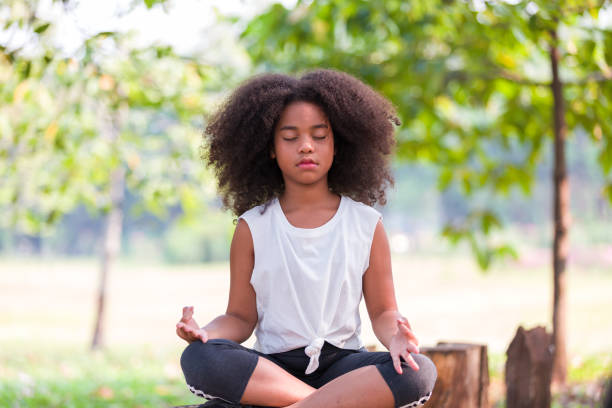Open Inner Peace: A Comprehensive Guide on How to Meditate?
Open Inner Peace: A Comprehensive Guide on How to Meditate?
Blog Article
Exactly How to Meditate: A Detailed Approach to Getting Mindfulness and Calmness
Reflection functions as an effective tool for achieving mindfulness and emotional calm in a busy globe. By recognizing the basic principles and techniques included in reflection, people can cultivate a practice that boosts their total wellness. This conversation will outline important steps, from creating a favorable atmosphere to incorporating reflection into day-to-day routines. As we explore these elements, it ends up being clear that the trip to mindfulness is not just about the act of sitting in silence, however rather regarding cultivating a much deeper link with oneself and the globe around us. What might this transformation entail?
Comprehending Meditation
Comprehending reflection includes realizing its basic concepts and strategies, which act as the structure for the technique. At its core, reflection is a psychological exercise focused on promoting relaxation, building internal energy, and creating concern and understanding. The method motivates individuals to focus their interest, commonly via strategies such as deep breathing, visualization, or mantra repeating.
Reflection can be classified into different designs, including mindfulness, transcendental, and loving-kindness meditation, each with unique functions and methodologies. Mindfulness reflection stresses present-moment understanding and non-judgmental observation of ideas and sensations, while transcendental reflection involves the use of details rules to transcend ordinary mind. Loving-kindness meditation concentrates on establishing an attitude of love and compassion in the direction of oneself and others.
Regardless of the strategy utilized, the primary objective remains regular: to cultivate a much deeper understanding of the mind and its patterns. This self-awareness promotes emotional strength, clarity of idea, and a profound feeling of calmness (How to meditate?). By understanding these strategies and principles, people prepared for an effective meditation method that can considerably boost their general health
Getting Ready For Your Practice
Before beginning your reflection practice, it is necessary to create an atmosphere favorable to concentrate and leisure. Guarantee that the area is complimentary and clean of mess, as a neat environment can assist remove the mind.
Take into consideration the lights, as natural light can improve your state of mind and power. Soft, warm illumination is usually more calming than rough fluorescent lights. Furthermore, choose a comfortable temperature level, guaranteeing that you are neither as well hot neither as well cold.
Including components that advertise tranquility can better enhance your experience. This might include soft paddings or coverings for comfort, in addition to relaxing aromas from essential oils or incense. It can likewise be valuable to have actually a timer established for your reflection session to prevent interruptions from clock-watching.
Fundamental Meditation Techniques

An additional effective technique is body check reflection. This entails emotionally scanning your body from head to toe, discovering any locations of stress or pain and consciously kicking back those muscular tissues. This technique fosters a much deeper connection between your body and mind.

Last but not least, loving-kindness meditation concentrates on cultivating concern in the direction of on your own and others. Silently repeat phrases of a good reputation, improving psychological wellness and interconnectedness. Each of these strategies acts as a structure for your reflection trip, permitting you to discover the method that resonates finest with your individual practice.
Maintaining Emphasis and Mindfulness

Establishing a dedicated meditation area can improve the capability to preserve mindfulness. A quiet, minimalist environment decreases interruptions, permitting deeper immersion in the technique. Furthermore, setting a time frame can assist take care of assumptions; beginning with shorter sessions may alleviate the change right into longer techniques.
Using strategies such as body scanning or observing feelings can also boost mindfulness. These methods motivate specialists to stay existing and engaged with their physicality, securing their interest in the moment. Routine technique is necessary; the mind develops durability gradually, producing a stronger capability for focus.
Incorporating Meditation Into Daily Life
Including meditation into life can transform routine tasks into chances for mindfulness and self-reflection. By incorporating mindfulness practices right into typical jobs, individuals can cultivate a greater sense of visibility and harmony in the middle of the busyness of everyday life.
Begin by determining minutes throughout your day where you can exercise and stop mindfulness. As an example, during your early morning commute, concentrate on your breath or the experiences of the setting around you. In the kitchen, technique cooking as an introspective technique, savoring the textures, shades, and fragrances of the active ingredients. Also mundane tasks like strolling or washing meals can become possibilities for reflection by routing your focus to the sensations of movement and the sounds bordering you.
In addition, alloting specialized times for reflection can enhance its practice. Beginning with short sessions, slowly enhancing period as you end up being more comfortable. Use tips or cues-- like a certain time of day or a calming noise-- to develop uniformity.
Eventually, the goal is to weave mindfulness into the material of life, permitting you to approach each minute with intention, thus enhancing your overall sense of well-being and quality.
Final Thought
In final thought, reliable reflection calls for a silent atmosphere, a comfy position, and an emphasis on the breath. Normal meditation, even try these out in short sessions, cultivates a deeper connection to the existing moment, inevitably leading to greater calmness and mental clearness in everyday life.
Meditation can be classified right into different designs, including mindfulness, transcendental, and loving-kindness meditation, each with distinct moved here objectives and techniques. Mindfulness reflection stresses present-moment awareness and non-judgmental observation of feelings and thoughts, while transcendental reflection entails the usage of specific concepts to transcend regular thought procedures.With your meditation room prepared, it's time to discover various basic reflection techniques that can help grow mindfulness and inner tranquility.Regularly preserving focus and mindfulness throughout reflection can be challenging, specifically for those brand-new to the practice.Establishing a specialized reflection room can improve the ability to keep mindfulness.
Report this page